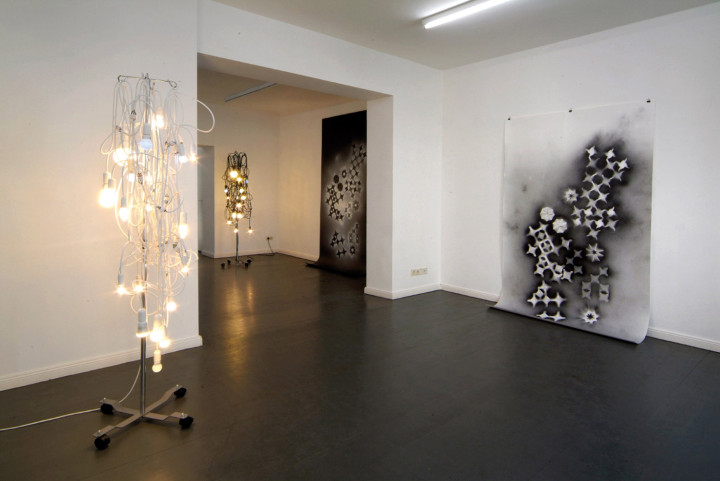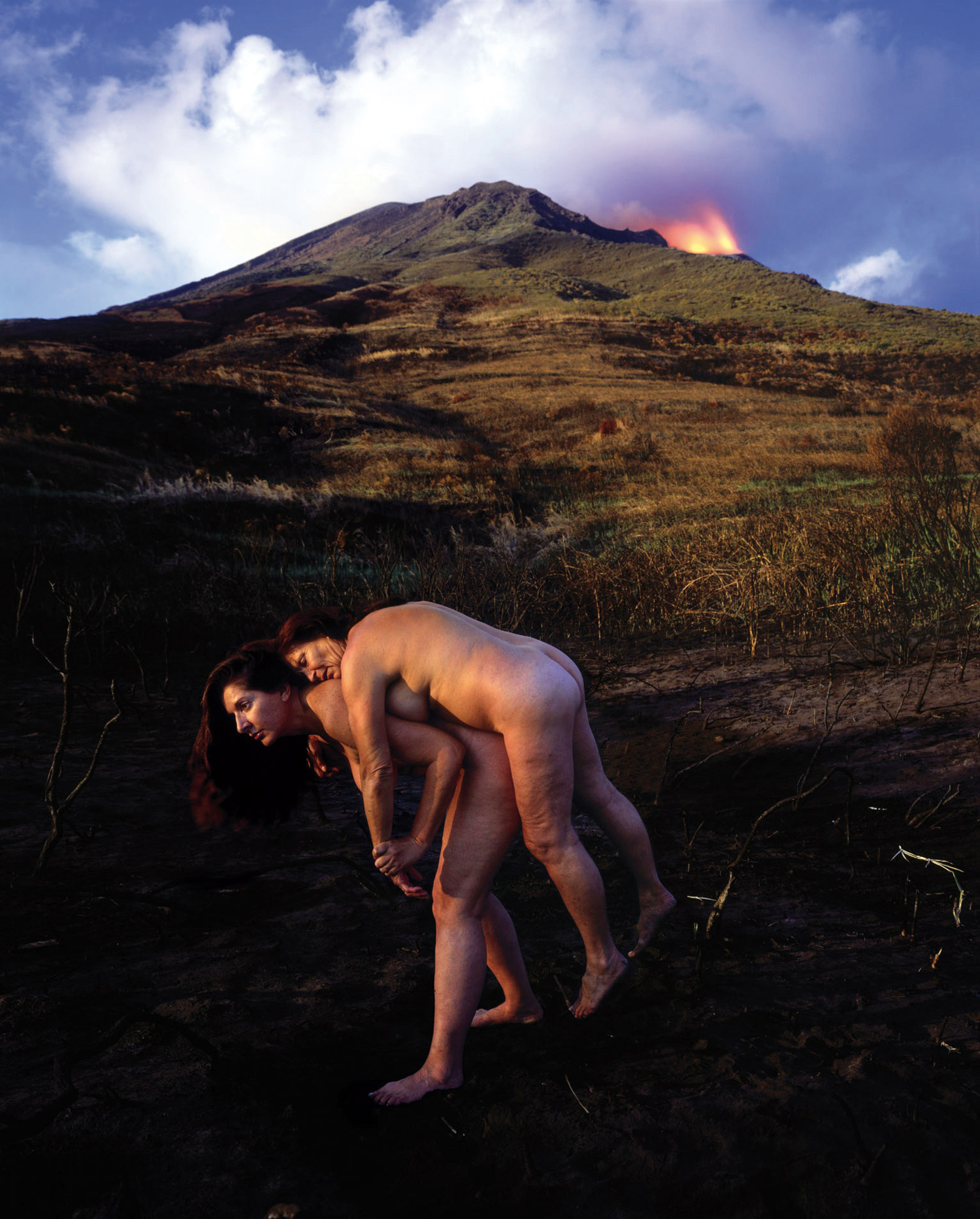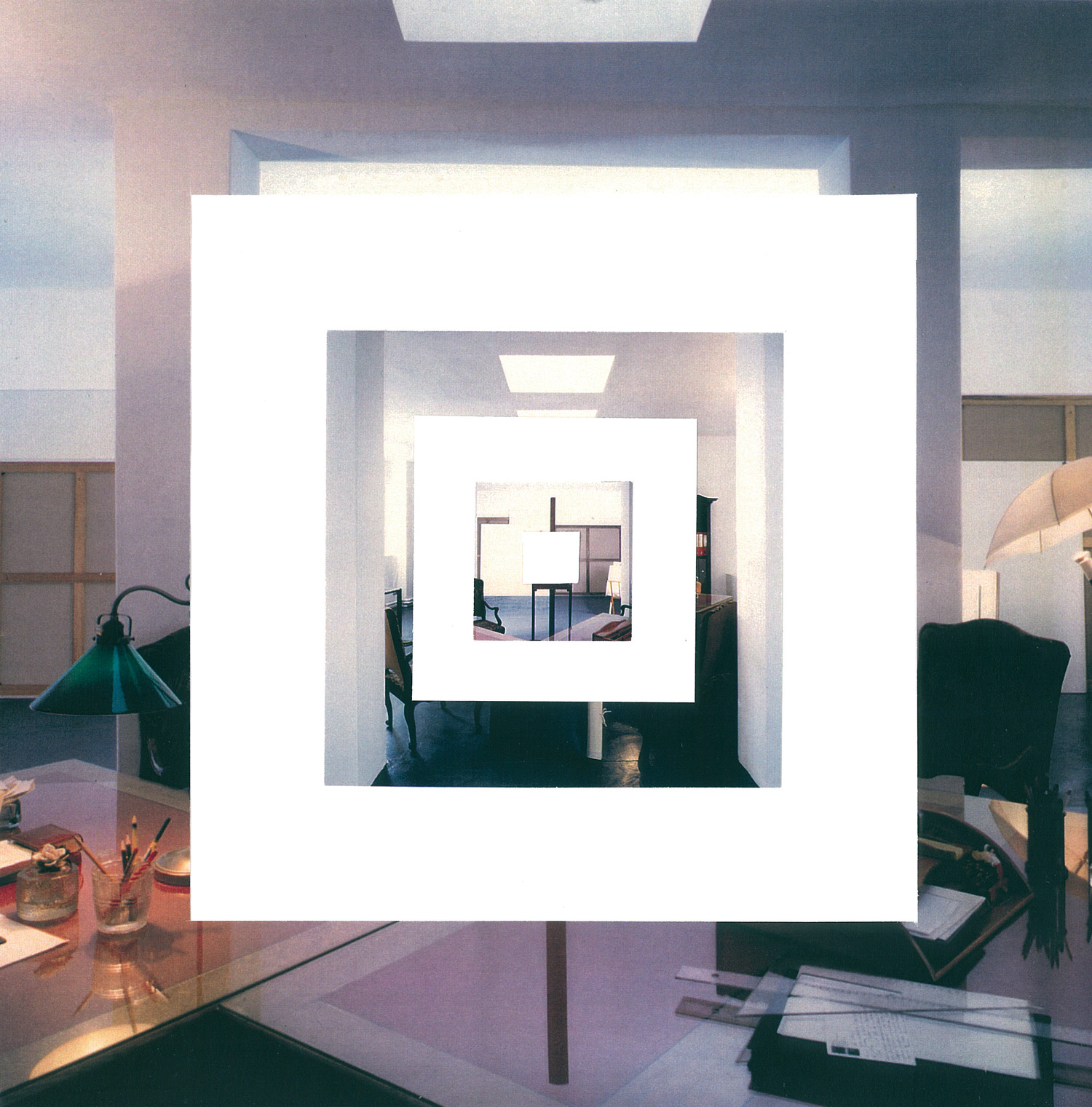
Black, white, white, black. And timid colors juxtaposed, barely detectable, that issue from a recent past. This exhibition and its ambiguous title — room, evoking a domestic space, remote, a retiring space, distant, maybe hidden — took place as if in reflection, wherein the various works ultimately intermingled to form a single whole. Ambiguity, duality, are two parts of a single personality, but also, according to Haegue Yang, the echoes of an individual vis-à-vis society, a community, or the Other. No matter how fragile it may be, a bridge links a distance between two poles. Between black and white “there is a world,” one could say, and yet one cannot function without the other. On one side, large, long white pieces of paper, upon which can be found spray-painted silhouettes of pieces of origami, are hung from the wall and flow downward to the floor. On the other side, variously sized light bulbs that are both on and off are draped from cables upon a rolling display hanger, the light bulbs’ forms evocative of the nearby stencils. One of the display hangers is outfitted with black cables, the other with white. Upon close inspection, each junction of cable betrays the contents of small colorful electric cables, like the hidden part of a story. In 2004, in the video Unfolding Places, pieces of origami, folded pieces of colored paper, are strewn about upon a puddle in a gray and rainy urban setting. Progressively soiled and soon reduced to silence, this gesture comes across as annihilating; however, in the sense of a tabula rasa, it is a ‘negative’ that becomes positive. In “Remote Room,” color has disappeared or occupies a reclusive place (a remote place) in order to grant liberal expression to two values. After Unfolding Places, the non-folded stencils seem to focus upon that which cannot be folded. Even folded, one volume conceals, changes and alters other volumes, and as such re-creates the surrounding space. The little pieces of origami, cast away and stamped on, lurking underneath the couch of an exhibition at Neu Galerie (Berlin), are and will be, until they completely disappear, sources of a renewal, of something to come.
The space between the folds is then a mental space that one can mentally interpret as a solid — that’s what, in any event, the series “Whatever Being” suggests. DIN A4/DIN A3/DIN A2 Whatever Being, resemble two painting-sculptures. Painted white, they represent the angles produced when one lifts up from a flat surface, from one side or another, a piece of white paper in a variety of different European formats. The work of Haegue Yang is situated between two absolutes, the immaculate and the obscure, the usual measures and the ‘vulnerable arrangements,’ a certain penchant for the abstract but also a marked taste for precision, finally half way between two continents that already in our time add up to one.





